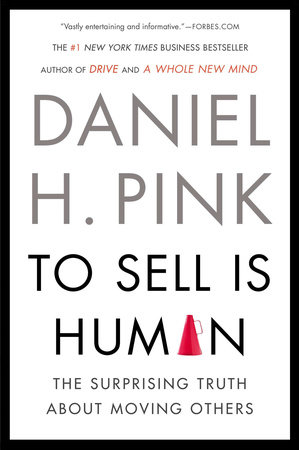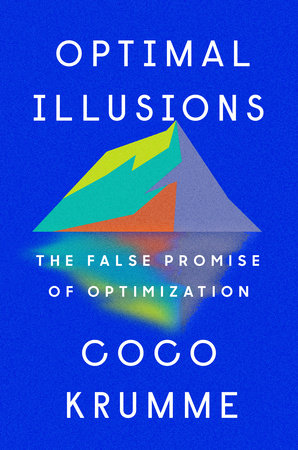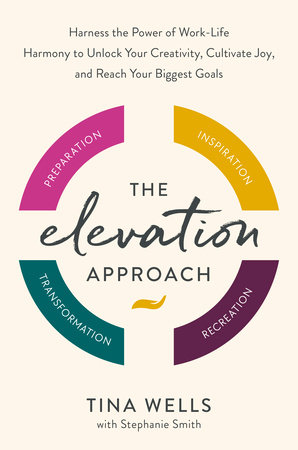Quick Summary
One Sentence Summary
“To Sell Is Human” by Daniel H. Pink explores the art of selling in the modern world, demonstrating how everyone is engaged in sales, whether they realize it or not.
Big Idea
The big idea of the book is that selling is an intrinsic part of human interaction and that the traditional approach to sales has transformed in the age of information. It advocates for a more empathetic, transparent, and service-oriented approach to selling.
Five Key Ideas
- The New ABCs: Pink introduces the new ABCs of selling: Attunement, Buoyancy, and Clarity, replacing the old “Always Be Closing.”
- Non-Sales Selling: Emphasizes that everyone is in sales, even those not in traditional sales roles, due to the constant need to persuade and influence others.
- Pitching Effectively: Discusses the importance of crafting compelling pitches and offers various techniques for effective communication.
- Understanding Others: Stresses the significance of empathy and perspective-taking in successful selling.
- Servant Selling: Introduces the concept of serving first and selling second, focusing on adding value to others.
Actionable Advice
- Practice attunement by stepping into others’ shoes.
- Develop resilience (buoyancy) to deal with rejection.
- Be clear and concise in communication.
- Listen actively and empathetically.
- Focus on how your service or product can truly benefit the customer.
About the Author
Daniel H. Pink is an acclaimed author and speaker, known for his insightful books on work, management, and behavioral science, such as “Drive” and “A Whole New Mind.”
Read Next
For further insights into motivation and human behavior, consider reading “Drive: The Surprising Truth About What Motivates Us” by Daniel H. Pink, or “Influence: The Psychology of Persuasion” by Robert B. Cialdini for a deeper understanding of persuasion techniques. For those interested in the changing dynamics of work, “The 4-Hour Workweek” by Timothy Ferriss offers an unconventional view of work and productivity.
In Depth
The New ABCs: Attunement, Buoyancy, and Clarity
Selling has evolved. Pink highlights this through the “New ABCs” – Attunement, Buoyancy, and Clarity.
Attunement
Attunement is about understanding and connecting with others. It’s stepping into their shoes, seeing the world from their perspective. Pink says, “Attunement is the ability to bring one’s actions and outlook into harmony with other people and with the context you’re in.” This is crucial in today’s sales environment.
Example: Pink discusses a study where negotiators achieved better outcomes when they physically mimicked their counterparts. This subtle attunement created a non-verbal connection, fostering trust and understanding.
Buoyancy
Buoyancy is about resilience. In sales, you face rejection. Buoyancy is the skill of staying afloat in this “ocean of rejection.” Pink advises to engage in self-talk before and after interactions. Before, ask yourself, “Can I do this?” It creates an engaging mindset. After, focus on positive reinforcement.
Example: Pink mentions a study of experienced salespeople. Those who maintained a realistic optimism, understanding the challenges but confident in their abilities, outperformed others.
Clarity
Clarity involves making sense of complex situations and identifying problems that others may not see. In a world flooded with information, being clear and concise is key. Pink notes, “Clarity on how to think without clarity on how to act can leave people unmoved.”
Example: Pink tells about a website redesign project. The team initially focused on aesthetic improvements. However, by clarifying the real issue—usability—they redesigned with the user experience in mind, leading to increased customer satisfaction.
In summary, Pink redefines the ABCs of selling. Attunement, Buoyancy, and Clarity are not just tactics; they are mindsets. They require understanding, resilience, and clear thinking. Pink emphasizes, “Today, like it or not, we’re all in sales now.”
“To sell well is to convince someone else to part with resources—not to deprive that person, but to leave him better off in the end.” – Daniel H. Pink
Non-Sales Selling
Non-sales selling is about influencing, persuading, and convincing others in everyday life. Pink states, “We’re all in sales now.”
Persuading in Everyday Life
Pink points out that people spend a significant amount of time persuading, influencing, and convincing others. This isn’t traditional selling but it involves moving others.
The Old and New Sales
The old view of sales focused on transactions. Today, it’s about guiding and assisting. Pink emphasizes the shift from seller-buyer to a collaborative relationship.
Example: Pink talks about a teacher who needs to convince students to study. It’s not about selling textbooks but selling the idea of education and its importance. The teacher tailors her approach, empathizes with students, and shows how education benefits them.
Ed-Med
Pink introduces the concept of “Ed-Med” – education and healthcare – where non-sales selling is prevalent. Professionals in these fields continuously use persuasive skills.
Everyone Is Selling
The idea is simple: Whether you are a teacher, doctor, or parent, you are in non-sales selling. You are persuading, influencing, and convincing every day.
“Today, like it or not, we’re all in sales. And because of that, we’re all spending our time moving people. We’re persuading, convincing, and influencing others to give up something they’ve got in exchange for what we’ve got.” – Daniel H. Pink
Pitching Effectively
Effective pitching is central to successful selling. Pink emphasizes crafting pitches that grab attention and communicate value succinctly.
The New Age of Pitches
In today’s information-saturated world, the ability to pitch ideas concisely and compellingly is vital. Pink stresses, “The purpose of a pitch isn’t necessarily to move others immediately to adopt your idea. The purpose is to offer something so compelling that it begins a conversation.”
Six Pitch Types
Pink outlines six types of pitches:
- The One-Word Pitch: Capturing your idea in a single, powerful word.
- The Question Pitch: Posing a question that prompts reflection and internalizes the message.
- The Rhyming Pitch: Using rhymes for memorability and persuasiveness.
- The Subject-Line Pitch: Crafting email subjects that entice recipients to open and read.
- The Twitter Pitch: Conveying an idea within 280 characters.
- The Pixar Pitch: Structuring a narrative as a short story, akin to Pixar’s storylines.
Example: The Pixar Pitch
Pink explains the power of storytelling in pitches, using the example of the Pixar Pitch. He describes how Pixar movies often follow a simple narrative framework, making them engaging and memorable. Applying this structure to pitches can make complex ideas more accessible and compelling.
For instance, “Once upon a time, there was [situation]. Every day, [routine]. One day, [change]. Because of that, [consequence]. Until finally, [resolution].”
The Power of Succinctness
In all pitch types, brevity and clarity are crucial. It’s about capturing the essence and igniting interest. Pink argues that pitches should open conversations, not end them.
“The best elevator pitch doesn’t pitch your project. It pitches the meeting about your project.” – Daniel H. Pink
Understanding Others
Understanding others is fundamental in the new era of sales. Pink emphasizes empathy and perspective-taking as key tools for effective selling.
Empathy and Perspective
Empathy is feeling with people. Perspective-taking is understanding their viewpoint. Both are essential for connecting with others.
The Power of Perspective-Taking
Pink highlights that perspective-taking is more effective than empathy in sales. Understanding someone’s context and viewpoint leads to better outcomes.
Example: Pink describes a car sales scenario. A salesman who takes the perspective of a family understands their need for safety and space. Instead of pushing luxury features, he focuses on these aspects, leading to a successful sale.
Attunement in Practice
Understanding others is part of attunement. It’s about aligning your actions and message with the person you’re interacting with.
Moving Others
To move others, you need to understand them. Pink stresses, “To sell well is to convince someone else to part with resources—not to deprive that person, but to leave him better off in the end.”
“The ability to see the world through the eyes of others is the ability that undergirds all the others.” – Daniel H. Pink
Servant Selling
Servant selling is about prioritizing the customer’s needs and adding value to their lives. Pink emphasizes the shift from selling products to serving customers.
Serving Before Selling
The focus is on serving first. It’s about understanding what the customer truly needs and how to add value to their life.
Upside-Down Sales
Pink turns the traditional sales approach upside down. It’s not about the seller’s needs; it’s about the buyer’s needs.
Example: Pink describes a software company that offers free, valuable content to potential customers. They provide webinars, e-books, and tools related to their product. This service-first approach builds trust and establishes expertise, leading to sales.
The Personal Element
Servant selling adds a personal touch. It’s about building relationships, not just closing deals.
Long-Term Relationships
Focusing on service builds long-term customer relationships. Customers return to those who have served them well.
“Make it personal and make it purposeful. That’s the way to sell today.” – Daniel H. Pink
Actionable Advice
- Embrace the New ABCs: Focus on Attunement, Buoyancy, and Clarity in all interactions.
- Practice Empathy: Put yourself in others’ shoes to understand their needs and perspectives.
- Craft Compelling Pitches: Use concise, engaging pitches, tailored to your audience.
- Listen Actively: Pay attention to what others are saying and respond thoughtfully.
- Be Resilient: Handle rejection with a positive mindset and learn from each experience.
- Provide Value First: Focus on how your service or product can benefit the customer before making a sale.
- Build Relationships: Foster long-term connections by prioritizing the customer’s needs.
- Communicate Clearly: Convey your ideas in a straightforward and understandable manner.
- Use Perspective-Taking: Understand the context and viewpoint of the person you are communicating with.
- Stay Informed: Keep up with changes and trends in your industry to provide relevant and valuable insights.
About the Author
Daniel H. Pink is a renowned author and speaker, with expertise in behavioral science and work trends. Born in 1964, he has a diverse educational background, holding a Juris Doctor degree from Yale Law School. Pink’s career spans from speechwriting for Vice President Al Gore to delving deep into the realms of motivation and business. His groundbreaking books include “Drive: The Surprising Truth About What Motivates Us” and “A Whole New Mind,” which explore the intricacies of human motivation and the necessity of right-brain thinking in modern society. Pink is known for challenging conventional wisdom and promoting a more human-centric approach to business and work. His beliefs revolve around the idea that intrinsic motivation and understanding human behavior are key to personal and professional success. Through his insightful writing and compelling talks, Pink continues to influence and inspire individuals and organizations worldwide.
Read These Next
You might like these similar books
- “Drive: The Surprising Truth About What Motivates Us” by Daniel H. Pink
- “Start with Why: How Great Leaders Inspire Everyone to Take Action” by Simon Sinek
- “Influence: The Psychology of Persuasion” by Robert B. Cialdini
- “The Power of Habit: Why We Do What We Do in Life and Business” by Charles Duhigg
- “Predictably Irrational: The Hidden Forces That Shape Our Decisions” by Dan Ariely
FAQ
1. What is the main premise of “To Sell Is Human”?
The book posits that selling is a fundamental part of human interaction, extending beyond traditional sales roles.
2. Who should read this book?
Anyone interested in understanding modern selling techniques, improving persuasion skills, or exploring human behavior in business.
3. Does the book provide practical advice?
Yes, it offers actionable strategies for effective communication, persuasion, and sales.
4. How does Pink redefine selling in the book?
He presents selling as a human-centric activity, focusing on empathy, understanding, and service.
5. Is this book suitable for people outside the sales profession?
Absolutely. It’s relevant for anyone looking to improve their ability to influence or persuade others.
6. How long is the book?
It’s a concise read, ideal for busy professionals.
7. Does Pink use real-world examples in the book?
Yes, the book is filled with practical examples and case studies.







